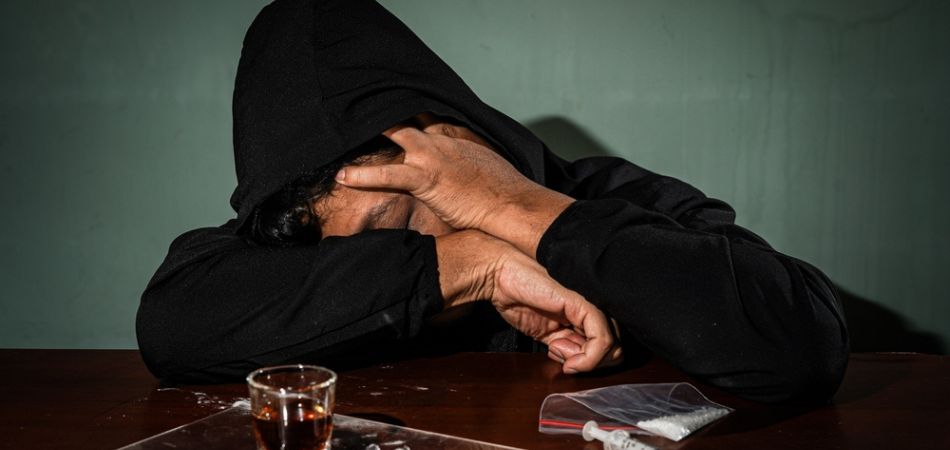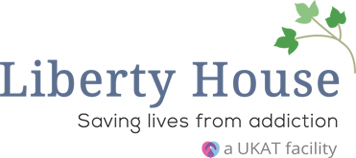Last Updated:
September 18th, 2025

The first time a person tries drugs, it is rarely as dramatic as first anticipated. Yet for many, the first use will symbolise the unlocking of the doorway of dependence, only visible in hindsight.
We’re going to trace the often imperceptible path from first use to full-blown addiction. We’ll use a fictional lens to portray a real pattern, highlighting how easily addiction takes hold and how difficult it becomes to break free from its shackles.
What are the stages of addiction?
Broadly speaking, the human body and mind do not arrive at addiction suddenly. What starts as an innocuous experiment of curiosity slowly and subtly progresses. The development of deep addiction often goes unnoticed until a person feels completely submerged in cold and tempestuous waters.
While of course, each person’s experience will differ, most addictions tend to operate through a recognisable series of stages:
- Initial experimentation: In this stage, curiosity is the most common driver. Peer influence can be more prevalent, especially in late adolescence and early adulthood. A person might be trying to escape discomfort, and little mind is paid to an imagined future self who struggles with addiction.
- More normalised use: The first use was the biggest hurdle. Now that it has been tried, a second time feels much less strange or taboo, though addiction has only started to rear its head, and may still be developing unnoticed.
- Psychological reliance: Substance addictions have the propensity to hijack your brain’s reward system. Often, before physical dependence forms, the mind is quick to draw links between perceived pleasure and the substance you put in your body.
- Relinquished control: It likely won’t be long until the power dynamic between your decisions and a drug’s temptation moves from waxing to waning. Boundaries that used to feel solid now appear elusive, and the way you feel when sober is often cast aside for how you will feel once you use again.
- Dependence and full-blown addiction: Frequency and quantity used are deftly downplayed, even to friends and family who are growing more concerned. Substance use becomes less about enjoyment and more about avoiding withdrawal or escaping the “turmoil” of sobriety.
An imagined journey to the dark terminus of addiction
To show how addiction can develop without fireworks, drama, or overt signals, we will paint a picture of how one experiment evolves into dependency. We’ll use an example that shows the development of benzodiazepine addiction.
Each person’s story will be different, but this is how it may look for you, if one time does not equate to the last time.
The first time: an innocuous experiment
It wasn’t a wild night out, or even a low point. It was just a moment, quiet and forgettable. A friend had mentioned that a leftover prescription helped them sleep when their thoughts wouldn’t stop. Mine hadn’t stopped for days.
They gave me one, so I took the small blue pill, not even knowing exactly what it was. Diazepam, they said. It kicked in gently. No euphoric high, just a steady untangling of everything tight in my chest and mind. I felt level again. Safe, even. Not giddy, not reckless, just… still.
I certainly slept better, but I’m not sure I can remember the whole experience. Because it helped, I filed that moment away somewhere deep in my mind. Maybe even under my mental folder of “solutions.” I should be fine.
Recurring thoughts:
- “That actually helped. I finally slept.”
- “It wasn’t a big deal, just once.”
- “I needed that.”
The second time: It helped, and that stuck in my mind
I didn’t rush back to it. Days passed, but the memory of that relief pleasantly lingered in my thoughts. The pill hadn’t made me feel high, just normal, like the volume dial in my brain finally turned down.
A few days later, I couldn’t sleep again. I didn’t have any left, but I knew someone who did, a friend of a friend. I didn’t even hesitate before asking for more. One pill became two, then a few stashed “just in case.”
Looking back, that’s when the line between need and want started to blur. The benzodiazepine wasn’t just a fallback anymore. It was becoming a key to being the best version of myself, with a stillness in mind, just like everyone else has.
Recurring thoughts:
- “That couldn’t have been the high. That was normal!”
- “It’s not like I’m buying on the street!”
- “Nobody around me is being hurt…”
The third time: when the routine was found before I realised it
There wasn’t a trigger this time. Not a sleepless night or a panic spiral. I just took one. No questioning, no pause. It had quietly settled into my routine, like brushing my teeth or double-checking the lock on my front door. One in the morning before work, because I function better on it. One in the evening before bed, just because…
I didn’t talk about it. I didn’t even think about it much. It felt like maintenance. Like something I needed to be myself, in a world that doesn’t like who I really am when I’m sober.
But I hadn’t lost control. Not yet. Obviously, I still had a job, showed up to things, and laughed at the right moments. So it didn’t look like a problem, even to me.
Recurring thoughts:
- “I’ve found a deep comfort in what I once used to help with a problem.”
- “I could stop if I wanted, just not today.”
- “I’m starting to understand how others get addicted to this…”
Subsequent use: My world is starting to shrink
Here I am.
I take one in the morning. Another before lunch. One more before bed. I don’t think I need to count anymore; I can intuit what I need throughout the day. My body speaks to me, telling me when I need it, and I’m pretty adept at listening now.
My time outside bores me. I don’t see friends, I don’t notice music in coffee shops, I don’t smell the roses, and I don’t wonder where the aeroplane overhead is going. Isolation isn’t as bad as my friends warned me about, months ago…
Here I’ll stay.
Recurring thoughts:
- “As long as I don’t run out…”
- “I feel like I used to have edges. Now I’m just… fog.”
- “This doesn’t feel like living, but it’s better than falling apart.”
How to get help early
We hope to have conveyed how addictions can silently evolve from one experiment of curiosity. If the story were to continue, we might be able to imagine the painful descent until rock bottom becomes the only foundation. Yet you should never wait until rock bottom to get the help you need.
Start by identifying any signs you might be addicted, not just physically, but mentally and emotionally. Has the substance become something you rely on to sleep, to focus, or to face the day? Are you using it more often than you intended, or hiding it from others?
If you knew this was happening to a loved one, you would recognise the importance of talking to someone about their drug use early. If you see it in yourself, you should consider talking to a GP, mental health professional, or just someone you love and trust.
Where can I get help for my addiction?
If you’re feeling the pull of addiction, please remember that there’s always a way back. We are here for you.
At UKAT, we specialise in drug addiction treatment, starting with detox, tailored to your needs. We use evidence-based therapies to help you tackle the roots of addictive behaviours. Whether you’re just starting to notice the signs you might be addicted or you’ve known for a while, we’re here to support you at each and every stage.
Get in touch today. You don’t have to wait for rock bottom. You just have to be ready to begin.
(Click here to see works cited)
- “Neuroscience and Addiction: Unraveling the Brain’s Reward System.” Neuroscience and Addiction: Unraveling the Brain’s Reward System | Penn LPS Online, 5 Feb. 2025, lpsonline.sas.upenn.edu/features/neuroscience-and-addiction-unraveling-brains-reward-system.





